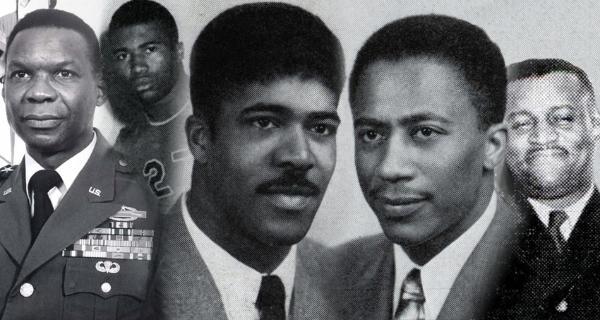
In the fall of 1947, five students set foot on Muhlenberg’s campus with little fanfare. The College was in the midst of record enrollment as it rode the post-WWII G.I. Bill boom; the Administration Building (now Ettinger), the heart and soul of the campus, had been severely damaged in a fire on the eve of commencement just months before; and the Board of Trustees was struggling with the Lutheran Ministerium over the issue of coeducation, which would be postponed for another ten years.
The Muhlenberg Weekly in September 1947 speaks of new faculty and football season prospects, but nowhere is it commemorated that the first black students had arrived at Muhlenberg. Julius Becton, Payton Flournoy, William “Elmo” Jackson, William Pulley and James Williams were, according to archival evidence, wrapped into the life and activities of the College without the tension and attention that would accompany wider college and university enrollment of blacks in the late 1960s, including at Muhlenberg. This happened nationwide in the 1950s, as campuses that had been de facto white-only began seeing the arrival of a few black students as their administrations began to actively recruit.
Allen B. Ballard, one of the two first black students at Kenyon College, wrote that the experience in this period was very much one of fitting in, of conforming to campus “norms,” unlike the more activist experiences of students of color in the late 1960s. Muhlenberg’s first five maintained their interest in forwarding opportunities for their community, however, attending NAACP meetings at a private residence in Allentown.
It is not surprising to me, as someone who has spent extensive time studying Muhlenberg in the 1940s, that our first black students arrived under the administration of President Levering Tyson, a progressive, cosmopolitan man who in many ways raised Muhlenberg’s profile beyond that of a slightly provincial, denominational institution to one of national prominence.
Tyson’s first term saw the establishment of a solid social science program at Muhlenberg as well as the hiring of the first female faculty member. His foresight led him to pursue the Navy training programs that allowed the College to survive the lean years of World War II and come out stronger on the other side, and I have no trouble envisioning him considering the issue of racial integration with the same forward thinking.
Without further ado, allow me to introduce Muhlenberg’s first black students.
